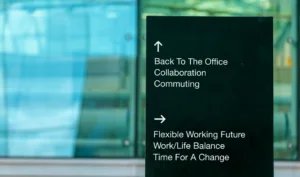
Talent in Harmony: Linking Work-Life Balance and Wellbeing
In a world where great talent is hard to find, emphasizing employee self-care and work-life balance gives employers a serious competitive advantage. Fostering a culture

In a world where great talent is hard to find, emphasizing employee self-care and work-life balance gives employers a serious competitive advantage. Fostering a culture

Although I have a full-time job, recently I’ve started to identify with solopreneurs. Why? Well, for eight years, I’ve also been spearheading an annual Children’s

Think about the most successful companies you know. More likely than not, they’re built on the strength of frontline employees, working collaboratively toward shared goals

In today’s competitive post-pandemic world of work, HR and business leaders recognize that employee wellbeing is a must-have for a strong, successful organizational culture. This

Toxic cultures are like dark clouds looming over the world of work. Wherever they go, they wreak havoc with employee wellbeing. That’s not an overstatement.

In today’s fractured, post-pandemic world, workforce mental health has emerged as a critical concern for business and HR leaders — and with good reason. The

These days, any employer that doesn’t lead with purpose is fighting an uphill battle. Why? Take a look at recent headlines. They’re filled with news

Every leader appreciates diligent team members who are engaged, reliable performers. However, there’s a fine line between people who take their work commitments seriously and

The pandemic has sparked a global conversation about whether people who’ve been working from home should be free to choose their preferred work location. It’s

Running a business from home can be an exhilarating and highly rewarding experience. But remote business owners know that leading from a home office also

We don’t need research to tell us the future of work will be much different from pre-pandemic norms. But Covid isn’t the cause. Disruption was

Have you noticed that workforce engagement and motivation are slipping? You’re not the only one. In April, Gallup confirmed that U.S. workforce engagement declined from

What are some ideas to make mental health support more accessible to employees? This question was posed to a group of talented professionals for their

How can companies create a remote working environment that is both productive and emotionally comfortable? With offices forced to close for long periods due to

Remote work isn’t new. In fact, working from home been on the rise since 2010. But this new decade brought with it COVID-19, triggering a

What’s the worst thing an employee can say on any given day? How about, “I don’t belong here?” The schism that takes place when an
As always, I’ve been following the trends that are really going to change the way we work. Among them: the need to continue evolving our

Your business doesn’t stop when an employee goes on vacation. There are still products and services that need to be sold, questions that need to

Employee engagement is the key to client engagement. See how fostering a company culture of engaged workers can bring about success.

We live in a world that is constantly in “on” mode. Smart phones, computers, emails, and phone calls; even after you clock off from work,
It’s no secret that there is a war going on… a tug of war to be exact. Companies are scrambling to find the best and
Is striking a balance between work and life a priority for you? You are not alone. 45 percent of employees said they don’t have enough
During today’s #WorkTrends show, we discussed the importance of forgetting the old “work-life balance myth” and how to start LIFEworking. #WorkTrends Founder and Host Meghan
Work or life? Nope. There’s no such thing as either/or. The work-life duality is a fallacy. One way or another, we all know, deep down,
While we have been led to believe that we can separate our personal and work personas, we are only one person. We don’t need to